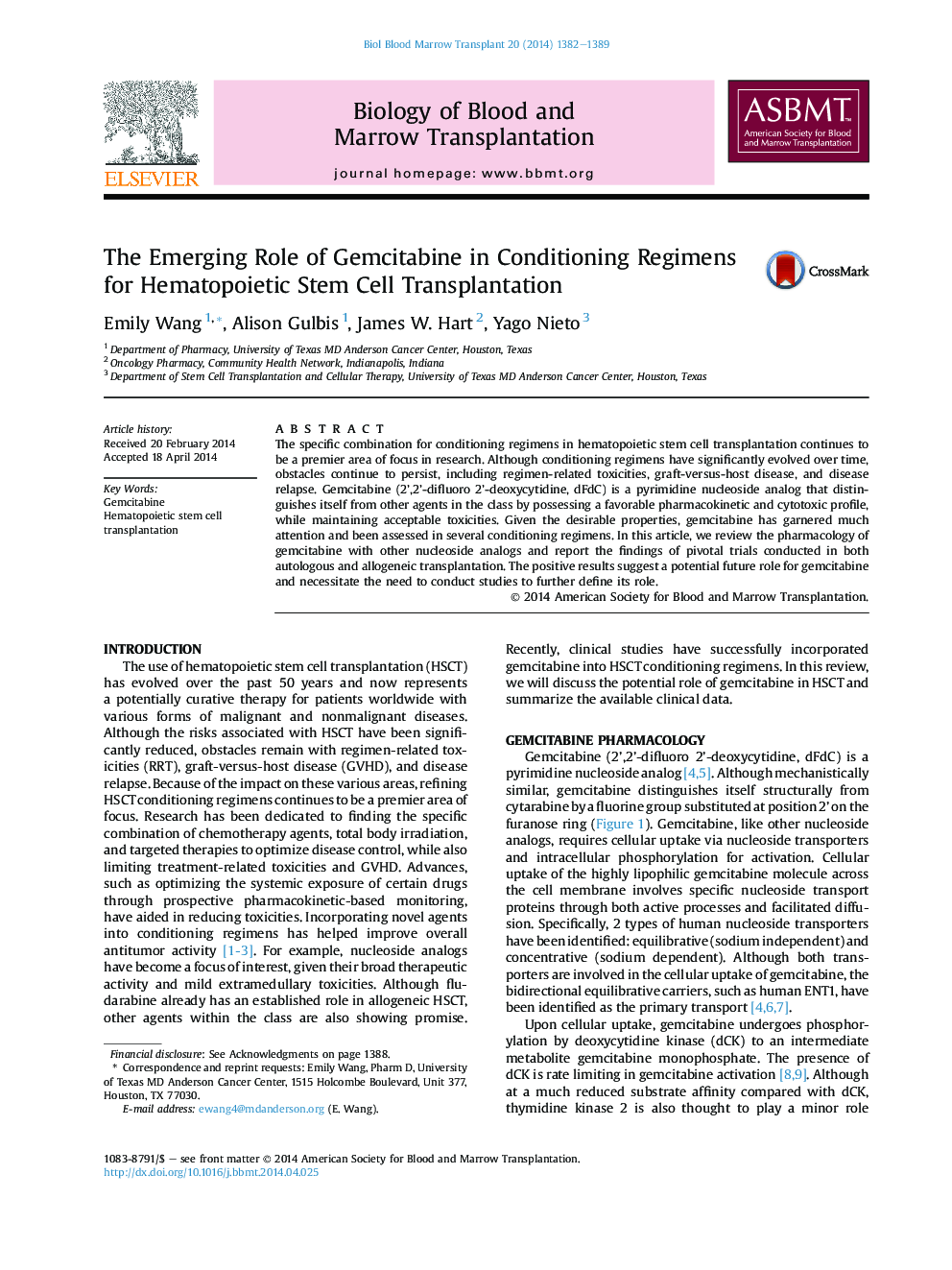| Article ID | Journal | Published Year | Pages | File Type |
|---|---|---|---|---|
| 2101911 | Biology of Blood and Marrow Transplantation | 2014 | 8 Pages |
The specific combination for conditioning regimens in hematopoietic stem cell transplantation continues to be a premier area of focus in research. Although conditioning regimens have significantly evolved over time, obstacles continue to persist, including regimen-related toxicities, graft-versus-host disease, and disease relapse. Gemcitabine (2’,2’-difluoro 2’-deoxycytidine, dFdC) is a pyrimidine nucleoside analog that distinguishes itself from other agents in the class by possessing a favorable pharmacokinetic and cytotoxic profile, while maintaining acceptable toxicities. Given the desirable properties, gemcitabine has garnered much attention and been assessed in several conditioning regimens. In this article, we review the pharmacology of gemcitabine with other nucleoside analogs and report the findings of pivotal trials conducted in both autologous and allogeneic transplantation. The positive results suggest a potential future role for gemcitabine and necessitate the need to conduct studies to further define its role.
